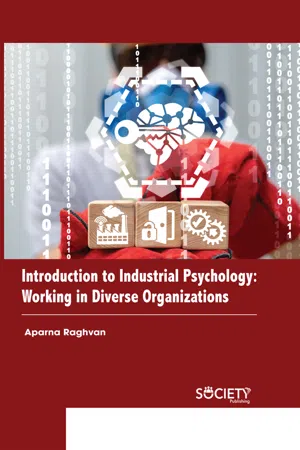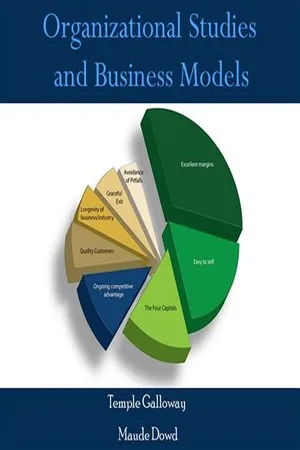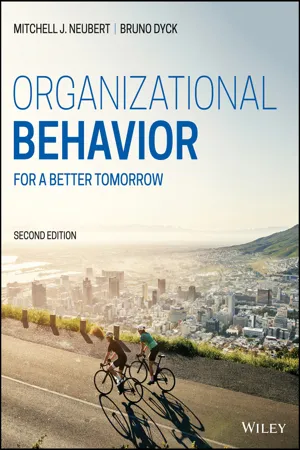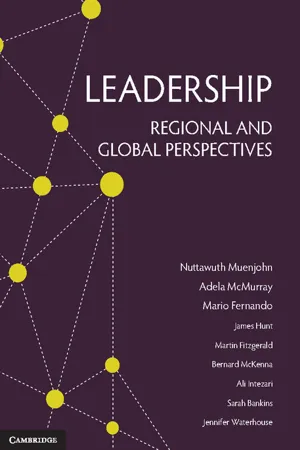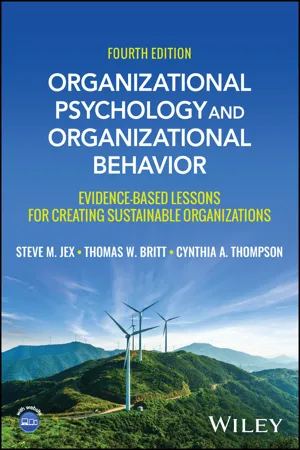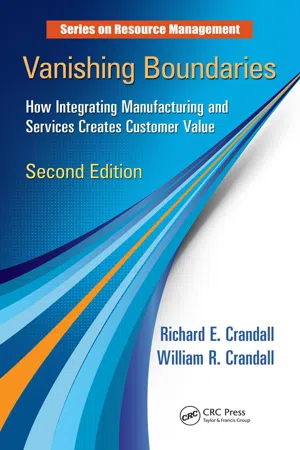Business
Understanding and Developing Organizational Culture
Understanding and developing organizational culture involves recognizing and shaping the values, beliefs, and behaviors that define a company's identity. It encompasses fostering a positive work environment, promoting shared goals, and aligning employee behaviors with the organization's mission. Cultivating a strong organizational culture can enhance employee engagement, productivity, and overall business performance.
Written by Perlego with AI-assistance
Related key terms
1 of 5
12 Key excerpts on "Understanding and Developing Organizational Culture"
- Aparna Raghvan(Author)
- 2020(Publication Date)
- Society Publishing(Publisher)
Organizational Culture and Development 4 CONTENTS 4.1. Introduction ...................................................................................... 40 4.2. What Does It Mean For The Company? ............................................. 40 4.3. The Human Resource’s Contribution ................................................. 41 4.4. Types of Organizational Culture (Figure 4.2) ..................................... 42 4.5. Importance of Organization Culture ................................................. 48 4.6. The Role of Organization Culture In An Organization ....................... 51 4.7. What Is Organizational Development (OD)? ..................................... 54 Chapter Introduction to Industrial Psychology: Working in Diverse Organizations 40 4.1. INTRODUCTION Organizational culture refers to a set of shared norms, values, and principles, which determine how individuals behave in companies (Alvesson, 2012). These shared ideals have a concrete influence on the colleagues in the busi -ness and describe how they dress, behave, and perform various jobs (Figure 4.1). Figure 4.1. Every company develops and preserves a distinctive culture, which offers guidelines and restrictions for the conduct of members with that organi-zation. Source: https://www.locusassignments.com/solution/assignment-organization-al-structure-culture. A company’s culture is usually communicated and strengthened through various techniques, ultimately determining employee perceptions, actions, and understanding. Moreover, it sets the framework for everything an organization does. Since industries and circumstances vary greatly, there isn’t any particular culture template that captures the demands of all companies. 4.2. WHAT DOES IT MEAN FOR THE COMPANY? A strong organizational culture is usually the strongest denominator among outstanding companies.- eBook - PDF
- Gert Alblas, Ella Wijsman(Authors)
- 2021(Publication Date)
- Routledge(Publisher)
3 We inspire people to small, everyday acts that, when put together, can have a real impact on the world. 4 We develop new ways of doing business whose goal is to double the scope of our company, while simultaneously lowering our impact on the environment. We have always had faith in the ability of our brands to improve the lives of people and to do what is right. As our company grows, so do our responsibilities. We realise that global challenges such as climate change are matters that concerns us all. Accountability for the wider impacts of our actions is ingrained in our values; it is a fundamental part of who we are. § 8.6 The development of organisational culture How is the culture of an organisation created? Many factors play a part in the development of a culture, such as the nature of the work and the environment in which the organisation must operate, but it is primarily created by the people who founded the organisation. Once the culture has developed, it is the (top) managers who embody, maintain or gradually change the culture. According to the theory of Schein (1985), the culture of an organisation arises out of a learning process that is focused on finding the best way for Learning process members to interact with each other and with the environment in which they are involved. It is a process whose goal is internal integration and external adaptation. Ad 1 Internal integration Internal integration is the adaptation of the activities of the members of the organisation to each other and to the goals of the organisation. In the process of integration, they learn how they must interact with each other. Once the appropriate manner of interaction has been found, this is elevated to a norm or value. Henceforth, interaction must take place in the prescribed manner. - eBook - ePub
Giving Voice to Values-based Leadership
How to Develop Good Organizations Through Work on Values
- Gry Espedal, Frank Elter(Authors)
- 2023(Publication Date)
- Routledge(Publisher)
5 ______________________________________ DEVELOPING A VALUES-BASED ORGANIZATIONAL CULTUREDOI: 10.4324/9781003342861-5Organizational culture is the informal glue in organizations, and values are at the core of the culture that is telling people “how things are done around here.” A strong culture can provide consistency and direction, guide decisions and actions, fuel the workforce, and help organizations to reach their potential. But for any organization, change is inevitable. Changing customer demands, new technology, changed governmental regulations, geopolitical tensions, and crises are all examples of driving forces requiring change. In the private sector, companies carry out major transformations to digitalize production processes and customer interaction and to arrange for sustainable operations and products. When organizations are undergoing mergers and acquisitions, two cultures need to be aligned to succeed.The public sector is also undergoing fundamental reforms and changes. In Norway, the spread of new public management was one transformation driver of the hospital sector. The police have undergone fundamental reforms in services, locations, and organizations. The EU reported in its eGovernment Benchmark that governmental agencies across Europe are carrying out turnarounds to become better digital service organizations for their citizens (EU, 2022). These examples illustrate that major transformations take place in both the private and public sectors. When what an organization does and how it is done are undergoing fundamental change, the culture may need to evolve accordingly.There is not yet a consensus on what organizational culture is, and many definitions are available. We subscribe to Schein’s definition of organizational culture: - eBook - ePub
Handbook Change Management
Management of Change Processes in Organizations Influencing Factors and Parties Involved Concepts, Instruments and Methods
- Georg Kraus, Christel Becker-Kolle, Thomas Fischer(Authors)
- 2017(Publication Date)
- Books on Demand(Publisher)
“Even management needs external observation to mirror their own observations regarding their actions and decision making. Organizational advising offers support in reflecting that is used as a communicative arrangement for such reflection. But the communicative culture in an organization itself can open inner reflection.” (Pankoke, E.: Organization and Culture, page 31).6.4.2 Concept of a new organizational culture
The first phase in changing the culture can be developed from the analysis. Most likely, these changes have developed over the course of the employee work life. If these changes are desirable, then they can be included in the official description of desired cultural aspects.The concept and description of the new organizational culture can be:- Developed by consultants and adopted by the board,
- Developed and adopted by the board,
- Developed and adopted by the board and leadership,
- Developed by a chosen project group, which includes managers and employees, and then adopted by executives,
- Developed by consultants, the board, leadership, and employees, and adopted by the board.
Purpose: All employees should be aware of the link between the purpose of their actions and the purpose of the organization. If employees are aware of their positions within the company, they are much more likely to understand and support change.Common identity: - eBook - PDF
- Gilbert W. Fairholm(Author)
- 1994(Publication Date)
- Praeger(Publisher)
6 Components of Culture INTRODUCTION Peters and Waterman (1982) identified culture as the basis for the excel- lence of many of the business organizations they studied. Their findings concluded that strong, cohesive cultures produce desired organizational results. Their eight-element model for understanding culture defines an organizational environment characterized by shared values and beliefs, heros and heroines, rituals and ceremonies, and cultural priests and priestesses—that is, storytellers, gossips, and spies. These are all aspects of cultural theory, not of organizational theory. They based their book— like culture itself—on a symbolic frame of reference in dealing with in- ternal (co-workers) and external (customers) clients. When talking about culture, we are really talking about reality con- struction. Culture helps member perception and understanding of par- ticular events, actions, objects, utterances, or situations in distinctive ways, but ways acceptable by the group. Culture creation—that is, reality construction—involves generating rules and systems of enforcing rule compliance. It is a task of creating social norms and customs. Enforce- ment of social norms is a major part of culture management. Effective enforcement determines success in reality construction and assurance that leaders can communicate desired meanings. Leaders use several mechanisms to manage meaning in the organiza- tion. These mechanisms, or systems of relationships, bind group mem- bers into a unity, making it distinct from all others. They communicate the system of meanings via symbols. Selznick (1957) talks of the embod- iment of values (a form of symbolism) in an organizational structure 80 Shaping Organizational Cultu through statements of mission, programs of activity, selective recruit- ment, and socialization. - No longer available |Learn more
- (Author)
- 2014(Publication Date)
- College Publishing House(Publisher)
____________________ WORLD TECHNOLOGIES ____________________ Chapter- 6 Organizational Culture Organizational culture is an idea in the field of organizational studies and management which describes the psychology, attitudes, experiences, beliefs and values (personal and cultural values) of an organization. It has been defined as the specific collection of values and norms that are shared by people and groups in an organization and that control the way they interact with each other and with stakeholders outside the organization. This definition continues to explain organizational values , also known as beliefs and ideas about what kinds of goals members of an organization should pursue and ideas about the appropriate kinds or standards of behavior organizational members should use to achieve these goals. From organizational values develop organizational norms, guidelines, or expectations that prescribe appropriate kinds of behavior by employees in particular situations and control the behavior of organizational members towards one another. ____________________ WORLD TECHNOLOGIES ____________________ Strong/weak cultures Training meeting about sustainable design. The photo shows a training meeting with factory workers in a stainless steel ecodesign company from Rio de Janeiro, Brazil. These type of meetings are important in order to establish a strong culture in the corporation Strong culture is said to exist where staff respond to stimulus because of their alignment to organizational values. In such environments, strong cultures help firms operate like well-oiled machines, cruising along with outstanding execution and perhaps minor tweaking of existing procedures here and there. Conversely, there is weak culture where there is little alignment with organizational values and control must be exercised through extensive procedures and bureaucracy. - eBook - PDF
- Mary Uhl-Bien, John R. Schermerhorn, Jr., Richard N. Osborn(Authors)
- 2013(Publication Date)
- Wiley(Publisher)
Is it just another gleaming office tower or the Freedom Tower symbolizing the resilience of the American people and New York City’s ability to recover from the attacks? 28 In this sense, organizational culture is a “shared” set of meanings and perceptions. The members of most organizations create and learn a deeper aspect of their shared culture. 29 Often one finds a series of common assumptions known to most everyone: “We are dif- ferent.” “We are better at. . . .” “We have unrecognized talents.” Cisco Systems provides an excellent example. Senior managers often share common assumptions, such as “We are good stewards” and “We are competent managers” and “We are practical innovators.” Like values, such assumptions become reflected in the organizational culture. Of course, shared meanings and perceptions can create a double-edged sword. In his book How Do the Mighty Fall, consultant Jim Collins notes that organizations may begin to decline if managers share an unrealistic positive perception of them. 30 Organizational Myths In many firms, a key aspect of the shared common assump- tions involves organizational myths. Organizational myths are unproven and frequently unstated beliefs that are accepted without criticism. Often corporate mythology focuses on cause–effect relationships and assertions by senior management that cannot be empiri- cally supported. 31 Although some may scoff at organizational myths and want to see ratio- nal analysis replace mythology, each firm needs a series of managerial myths. 32 Myths allow executives to redefine impossible problems into more manageable components. Myths can facilitate experimentation and creativity, and they allow managers to govern. Managing Organizational Culture L E A R N I NG ROA DM A P DIRECT ATTEMPTS TO CHANGE VALUES • DEVELOPING SHARED GOALS MODIFYING VISIBLE ASPECTS OF THE CULTURE The process of managing organizational culture is a complex challenge of the first order. - eBook - PDF
Organizational Behavior
For a Better Tomorrow
- Mitchell J. Neubert, Bruno Dyck(Authors)
- 2021(Publication Date)
- Wiley(Publisher)
5 We can describe cul- tures by their characteristics, as well as by how consistently members agree on cultural values and assumptions and use them as a guide for behavior. 6 For example, the “people first” organizational culture at Ultimate Software is different than the “profit first” culture in many firms. The culture of an organization is important in that it can attract, motivate, and help to retain organizational members. An organization’s culture can affect how satisfied members are with their jobs, how committed they are to the organization, how innovative they are, 7 and the quality of the products and services they deliver. 8 It influences the way members manage the organization’s expenses, satisfy its customers, 9 and contribute to a shared zeal that leads to higher sales. 10 Overall, organizational cultures with high levels of internal con- sistency—that is, cultures whose different elements fit together in a way that makes sense— tend to perform better. 11 And, as we’ll see later, some evidence suggests certain types of culture are related to financial measures of profitability and growth. 12 Researchers have found it helpful to think of two basic categories of elements in an organization’s culture: (1) informal elements like basic assumptions and values, and (2) for- mal elements, including cultural artifacts and formal structures. The iceberg depicted in Figure 12.1 shows how the informal elements are usually less visible (beneath the waterline) compared to the formal elements (above the waterline). Organizational structure is the formal arrangements and linkages among members and groups that specify work activities and subtasks and allow them to be completed. Although structure is not always included in the definition of organization culture, there is Organizational culture is the set of shared assumptions, values, and experiences that influence the ways in which individuals, teams, and groups interact with one another and work toward company goals. - eBook - PDF
Leadership
Regional and Global Perspectives
- Nuttawuth Muenjohn, Adela McMurray, Mario Fernando, James Hunt, Martin Fitzgerald, Bernard McKenna, Ali Intezari, Sarah Bankins, Jenny Waterhouse(Authors)
- 2018(Publication Date)
- Cambridge University Press(Publisher)
Therefore, they are expected to be practical in leading the culture through their words and actions. If the leader fails to consistently model the behaviours of the desired values and beliefs in word and deed, it is unlikely that employees will enact the new culture (Dawson, 2010 ). Chapter 7 Creat ing organisat ional cult ure | 179 • Facilitating people’s development : As adopting a new culture requires changes in attitudes and behavioural patterns, the organisational members may need to develop new skills and abilities. Cultural changes may lead to designing or redesigning the organisational processes. To perform organisational tasks through the new procedures may require new competencies. Moreover, changing values and beliefs often engages practices. Accordingly, providing appropriate trainings and learning activities to develop new skills and competencies in employees, senior executives and even the leader is vital. Implementing cultural changes is easier when all the organisational members – both the leader and followers – are involved in defining and developing the desired culture. Organisational culture change will not be successful unless people’s behaviours change, and this change can be sustained for as long as the organisation wishes. Sustaining cultural change Sustaining the organisational culture is a process through which shared values, beliefs and assumptions within the organisation endure for a period deemed appropriate by the organisations (Buchanan et al., 2005 ). The process of sustaining organisational culture change includes anchoring the change, institutionalising the change and sustaining best practices within the organisation. • Anchoring the culture change : This involves consolidating improvements and producing more culture change and institutionalising new approaches (Kotter, 1995 ). According to Kotter ( 1995 ), there are two dimensions of institutionalising cultural change. - No longer available |Learn more
- (Author)
- 2014(Publication Date)
- Orange Apple(Publisher)
This is primarily done through organizational communication, as individuals directly or indirectly share knowledge and meanings. Mergers, organizational culture, and cultural leadership One of the biggest obstacles in the way of the merging of two organizations is organizational culture. Each organization has its own unique culture and most often, when brought together, these cultures clash. When mergers fail employees point to issues such as identity, communication problems, human resources problems, ego clashes, and inter-group conflicts, which all fall under the category of “cultural differences”. One way to combat such difficulties is through cultural leadership. Organizational leaders must also be cultural leaders and help facilitate the change from the two old cultures into the one new culture. This is done through cultural innovation followed by cultural maintenance. • Cultural innovation includes: o Creating a new culture: recognizing past cultural differences and setting realistic expectations for change o Changing the culture: weakening and replacing the old cultures • Cultural maintenance includes: o Integrating the new culture: reconciling the differences between the old cultures and the new one o Embodying the new culture: Establishing, affirming, and keeping the new culture Corporate culture vs. organizational culture Corporate culture is the total sum of the values, customs, traditions, and meanings that make a company unique. Corporate culture is often called the character of an organization, since it embodies the vision of the company’s founders. The values of a corporate culture influence the ethical standards within a corporation, as well as managerial behavior. Senior management may try to determine a corporate culture . They may wish to impose corporate values and standards of behavior that specifically reflect the objectives of the organization. In addition, there will also be an extant internal culture within the workforce. - eBook - PDF
Organizational Psychology and Organizational Behavior
Evidence-based Lessons for Creating Sustainable Organizations
- Steve M. Jex, Thomas W. Britt, Cynthia A. Thompson, Cynthia A Thompson(Authors)
- 2024(Publication Date)
- Wiley(Publisher)
Prior to his current job, he was a statisti- cal consultant for the University of South Florida Muma College of Business. He received his Ph.D. in I-O Psychology from the University of South Florida in 2021. Organizational Culture and Climate 658 organizations, or by outsiders, the challenge may serve to strengthen employees’ beliefs in those basic assumptions. For example, if a new employee refuses to accept the basic assumptions that are inherent in an organiza- tion’s culture, this will typically force other employees to “bring that person into line.” In the process of doing so, the core values and assumptions may be strengthened or reaffirmed, regardless of whether that person eventually accepts them, actively resists them, or ultimately leaves the organization. It is worth noting, however, that while many organizational culture experts view culture as being highly resistant to change, as we see in Comment 12.4, there is not complete con- sensus among organizational researchers on this issue. In nearly all reviews of organizational culture over the years, one of the common assertions is that once the culture of an organization is estab- lished, it is extremely difficult to change (Ostroff et al., 2013; Schein, 2010). This is because, by definition, culture represents beliefs and assumptions that are so rarely questioned that they are not even conscious. Thus, it takes a lot of effort to get people to question basic assump- tions and, in the process, change culture. Although this is by far the dominant view- point within the literature, there is surpris- ingly little research to support this viewpoint (Ostroff et al., 2013). There is also some rea- son to believe that in some cases changing the culture of an organization may not be as difficult as people think. Wilkins and Ouchi (1983), for example, argued many years ago that the idea of organizational culture being difficult to change comes largely from cul- tural anthropology. - eBook - PDF
Vanishing Boundaries
How Integrating Manufacturing and Services Creates Customer Value, Second Edition
- Richard E. Crandall, William R. Crandall(Authors)
- 2013(Publication Date)
- CRC Press(Publisher)
The following section discusses what companies can do to change their organizational culture. Changing Organizational Culture To make changes and improvements in an organization, three elements need to be addressed: technology, structure, and organizational culture. This chapter describes Understanding Organizational Culture ◾ 369 © 2010 Taylor & Francis Group, LLC the power of culture as a key to change. Many companies do well at changing the technology when needed; they may be less adept at changing the structure. Changing the culture is often overlooked. It is that elusive element often forgotten in the change process. The good news is that culture can be changed, but it is often a slower process than changing the technology or structure of the organization. Changing organi-zational culture involves addressing a number of different focus areas, as shown in Figure 9.1 and discussed in the next section. State What You Want the Culture to Be Organizational leaders need to carefully state their vision for the company cul-ture. Such statements will appear in several formats. Because culture is a belief sys-tem followed by actions throughout the organization, it makes sense to state those beliefs in the company mission and values statements. Putting these statements on the company website is standard practice now. However, there are other places State what you want the culture to be Recognize employees formally Tell stories Unlock the power of words and phrases Change the physical cultural artifacts Implement the strategy that was proposed Take care of your employees Hire people that support the desired culture Promote an ethical culture Key Focus Areas Figure 9.1 Key focus areas in changing organizational culture. 370 ◾ Vanishing Boundaries © 2010 Taylor & Francis Group, LLC where mission statements can appear: on business cards and company letterhead, in lobby headquarters, even on coffee mugs.
Index pages curate the most relevant extracts from our library of academic textbooks. They’ve been created using an in-house natural language model (NLM), each adding context and meaning to key research topics.
